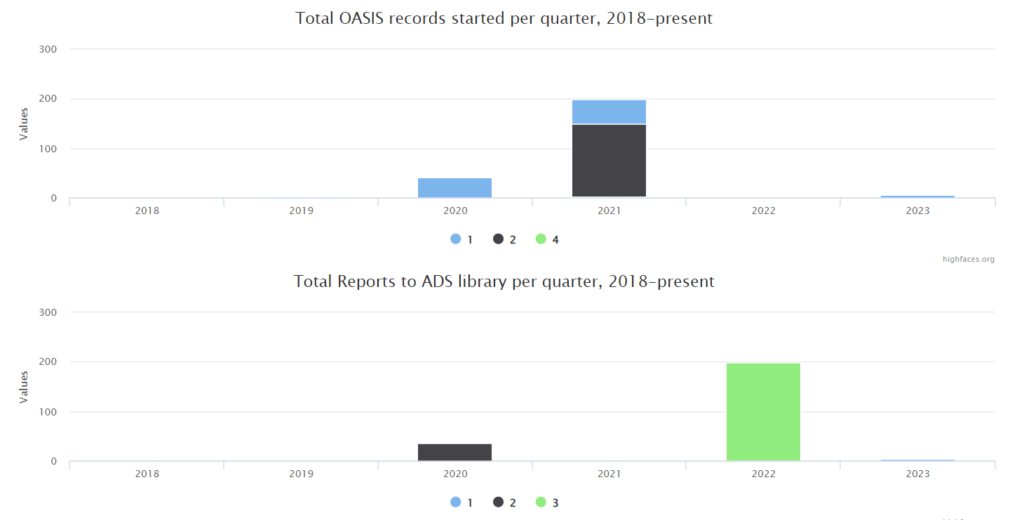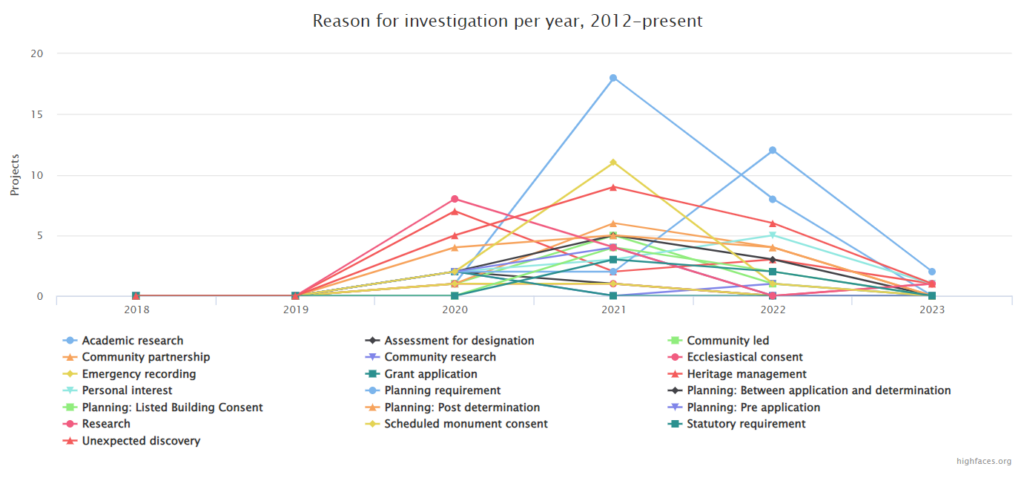
Over the last two years we’ve been developing a separate application known as the OASIS Dashboard. The Dashboard is a ‘sandbox’ application that focusses on presenting the user with more views and ways of interacting with OASIS data.
Funding for the Dashboard was via a grant from the University of York ESRC Impact Acceleration Account, under a project called ADP: Archaeological Data for Policy-makers. The primary aim of the project to present OASIS data in a more meaningful and visual way to local and national government users.
After a successful review of a pilot application, the Dashboard is open to all registered OASIS users, with access to records limited to those records you have created or have review rights for.
Here’s an overview of the types of functionality available:
Level 1 + 2 users
Summary statistics: including number of records created, records with core fields completed, records reviewed by the HER, number of reports in the ADS Library.
Search reports: ability to search for reports and see their DOIs

Throughput: a visual breakdown of records created/reports released

A map of projects: with ability to filter by year and type of project

Overview of project type: for example to compare planning and research projects.

Level 4 users (national bodies)
National heritage bodies – HE and HES – have a set of custom queries to show use of the system over time and key performance indicators.
Level 5 users
Currently designed as a proof of concept for Research Frameworks, a user has the ability to see the answers given to any of their Research Framework questions.
The future
There are additional features that are still in development – a more customised batch export for example – that will be added in due course.
Thinking further ahead… the metadata entered into OASIS has enormous potential, both for the stakeholders of the records (i.e. those that use OASIS regularly as part of reporting or reviewing) but also researchers that want to re-use metadata. There is also Level 3 users (museums and archives) to consider! The Dashboard now forms an essential part of half-yearly reporting back to the OASIS Management Board, who will steer future iterations of the application. The Board is cognisant of the potential for public access to key statisitcs so as to demonstrate the impact and benefit of historic environment information created by OASIS users. As a proof of concept, we’ve produced some very basic statistics on the public front page.